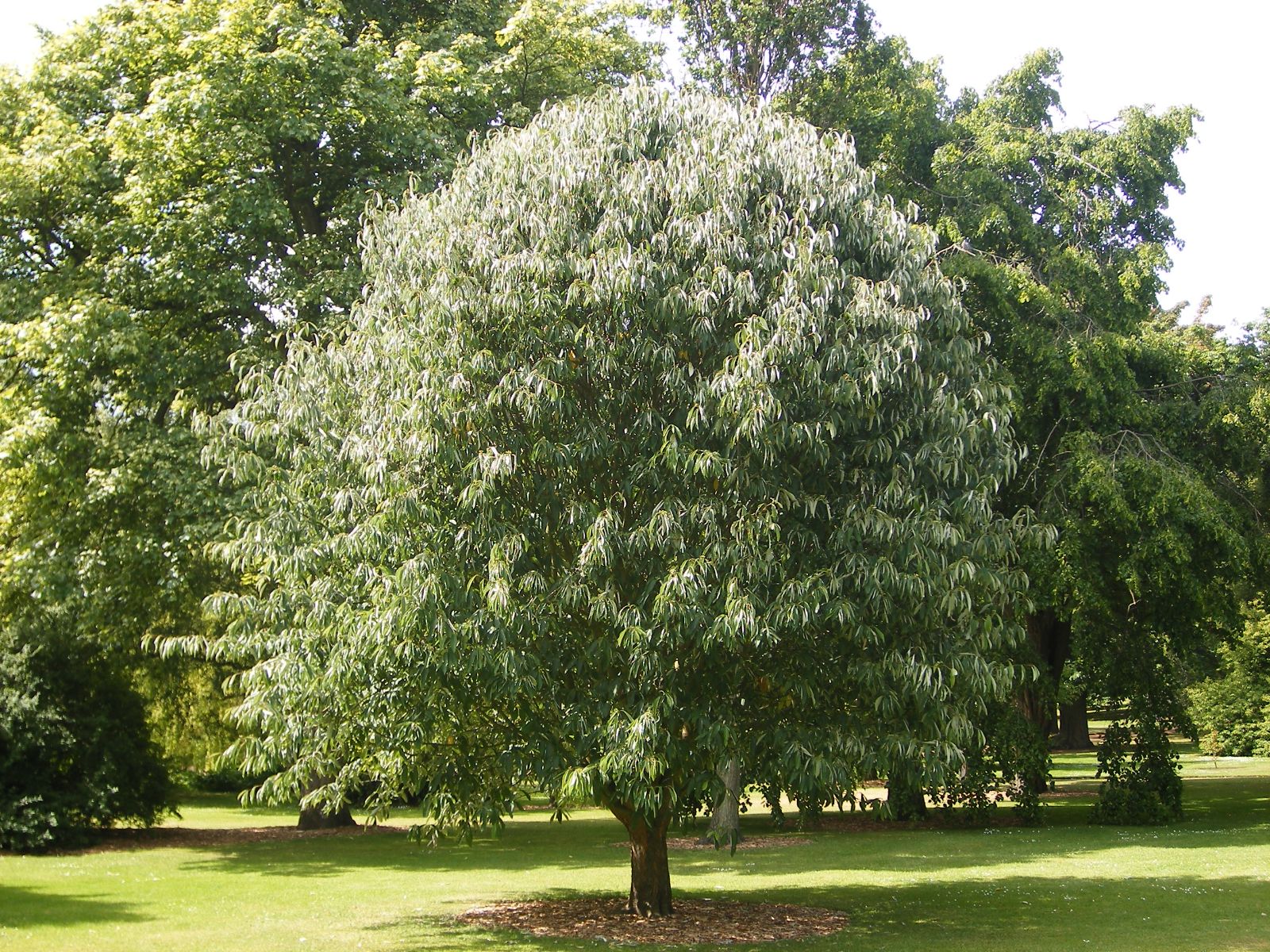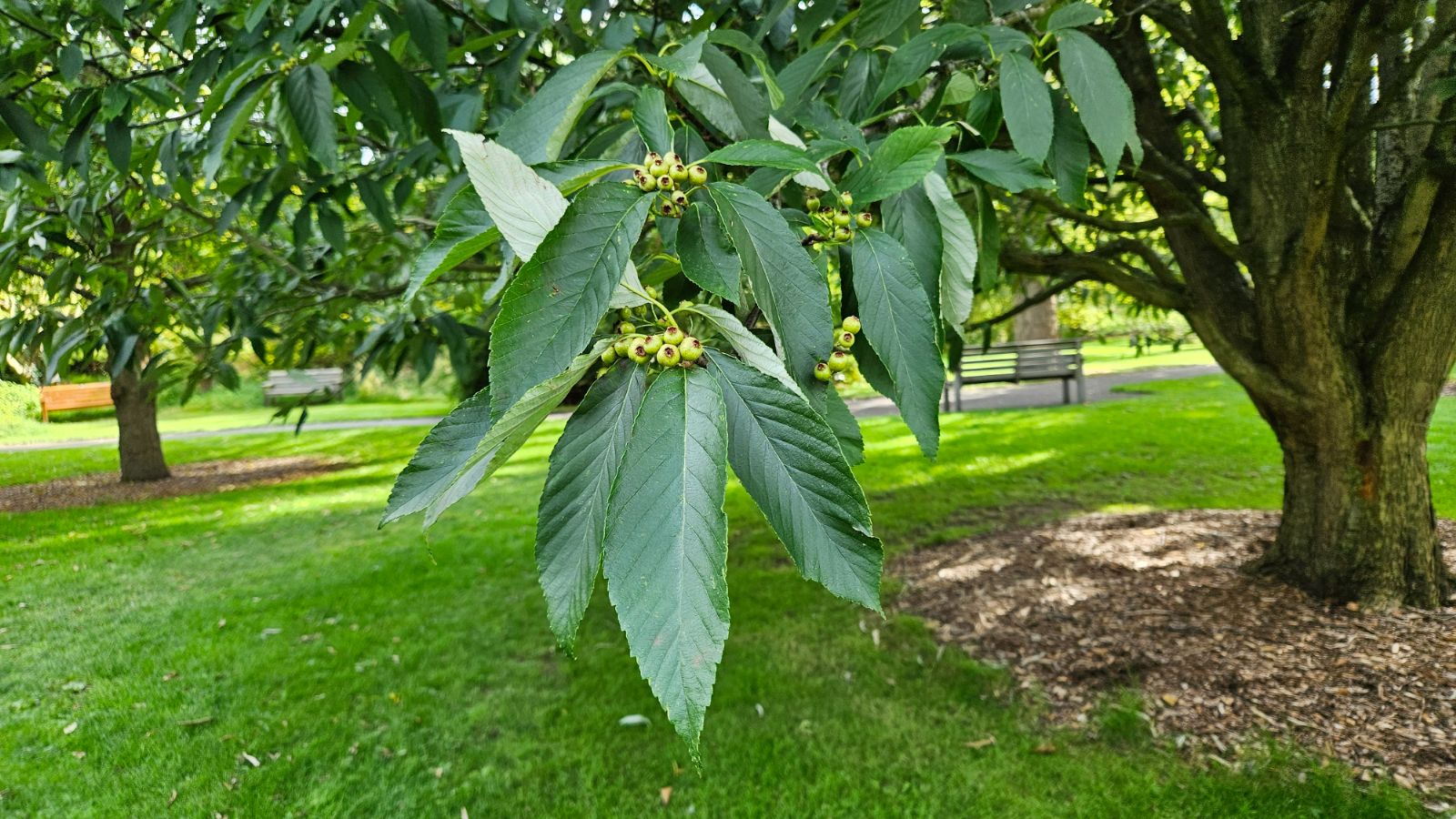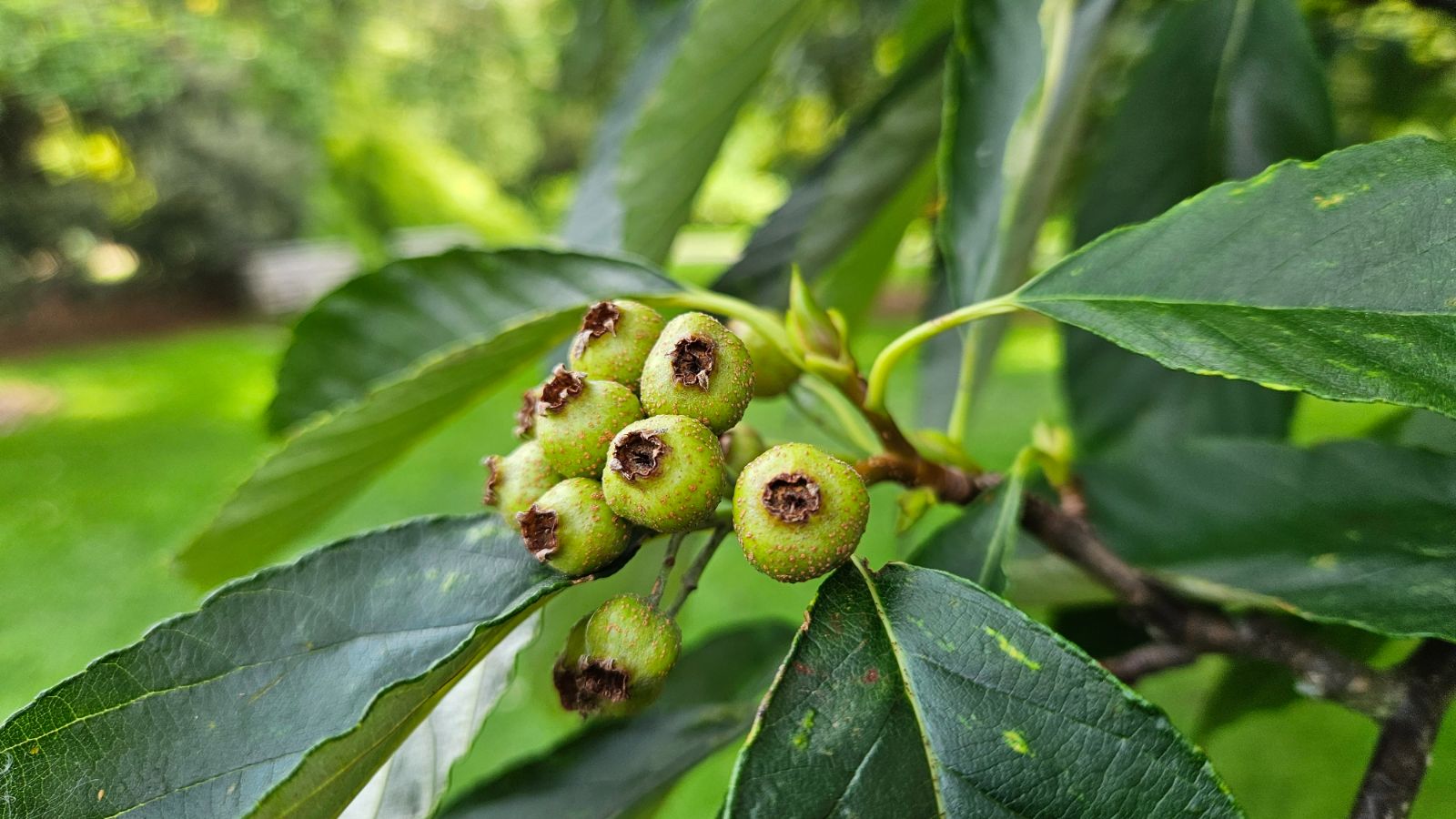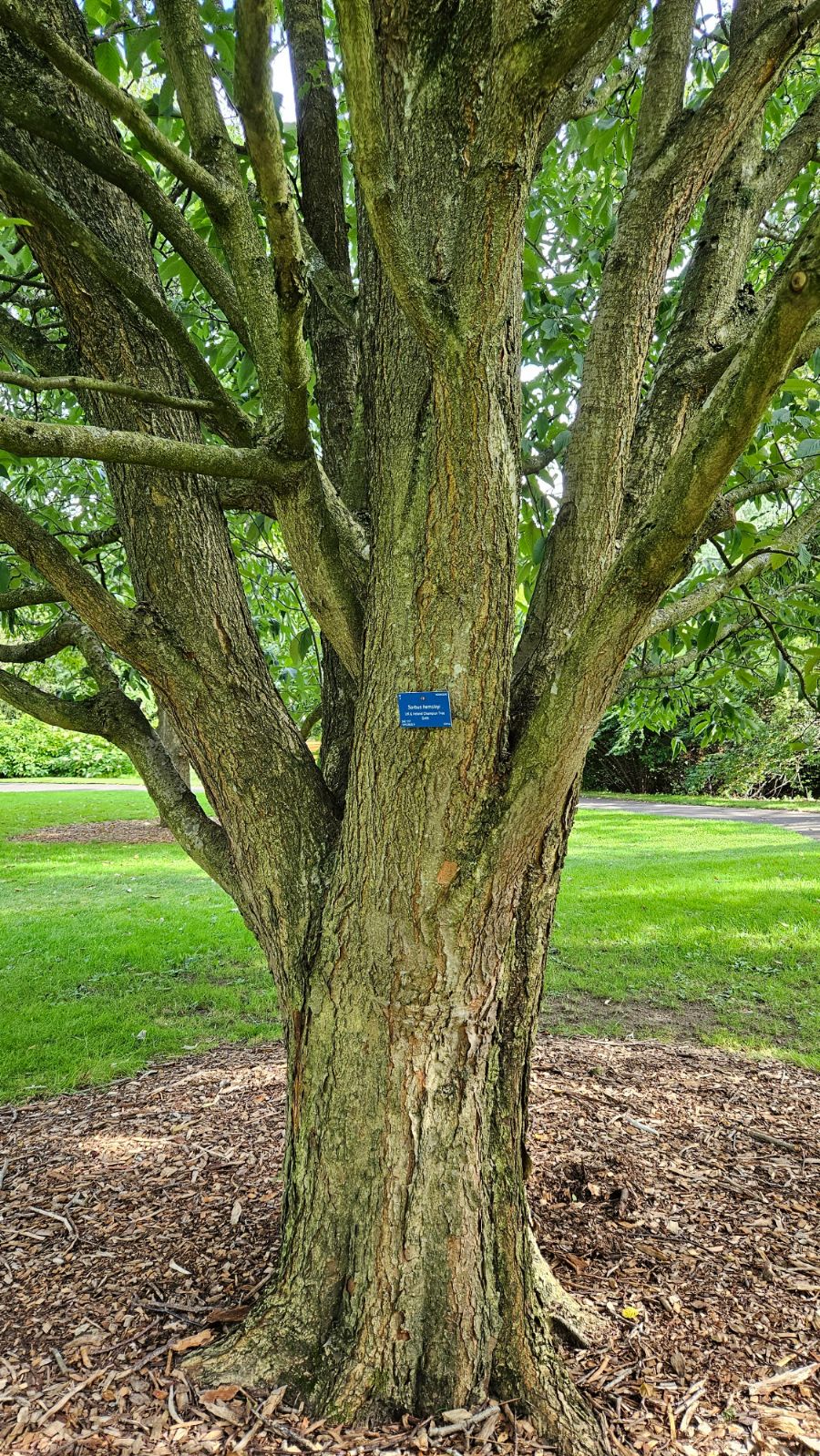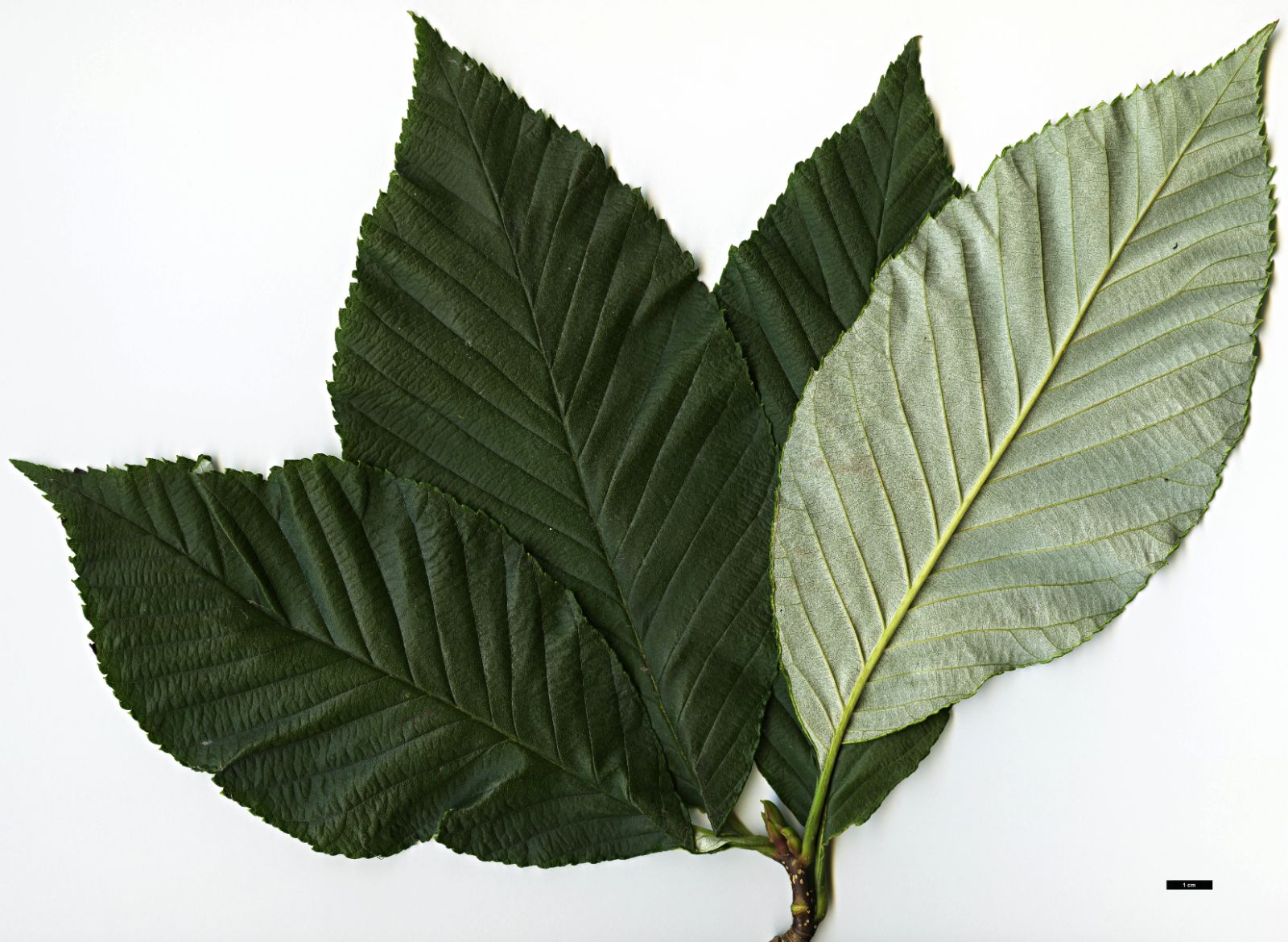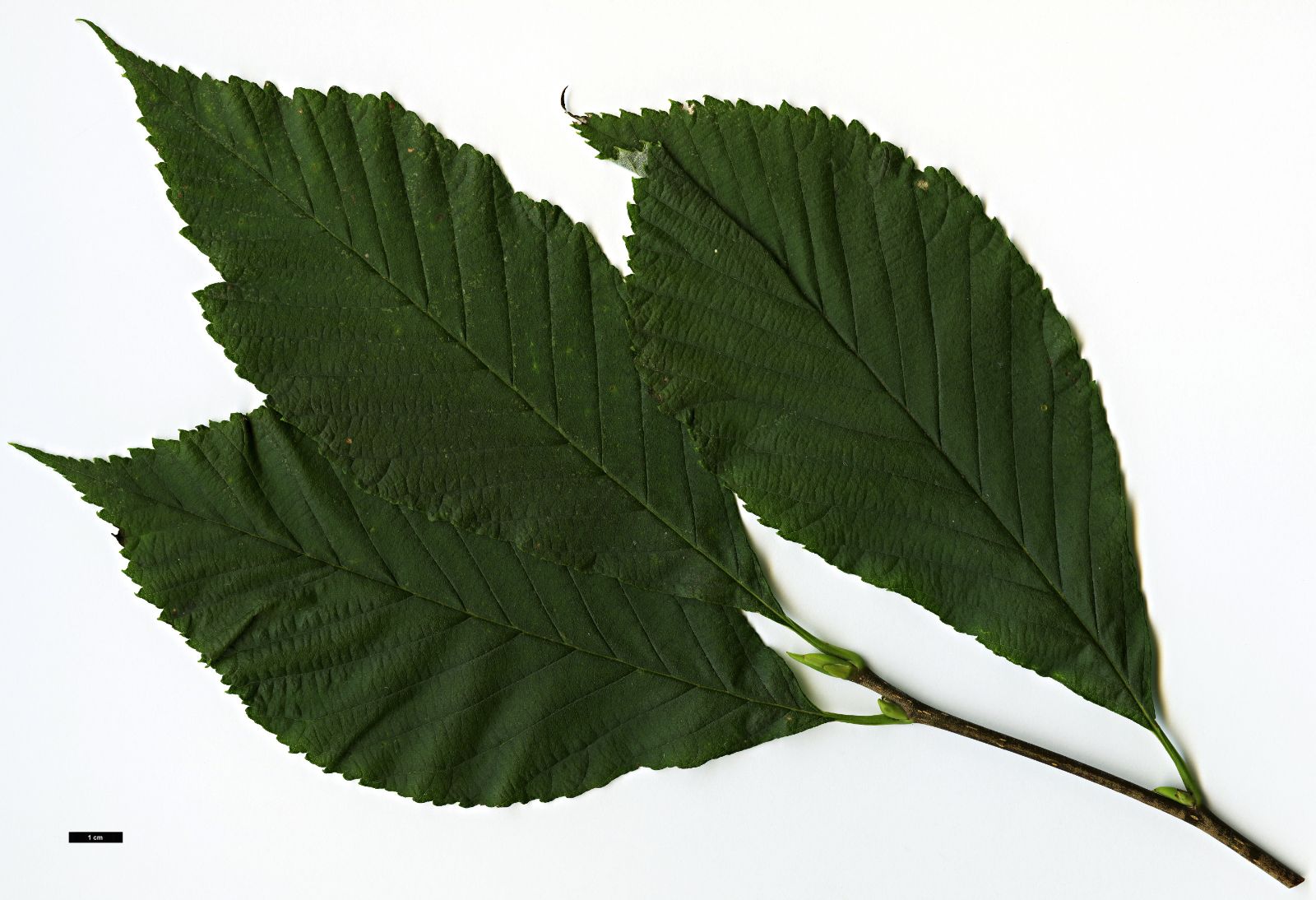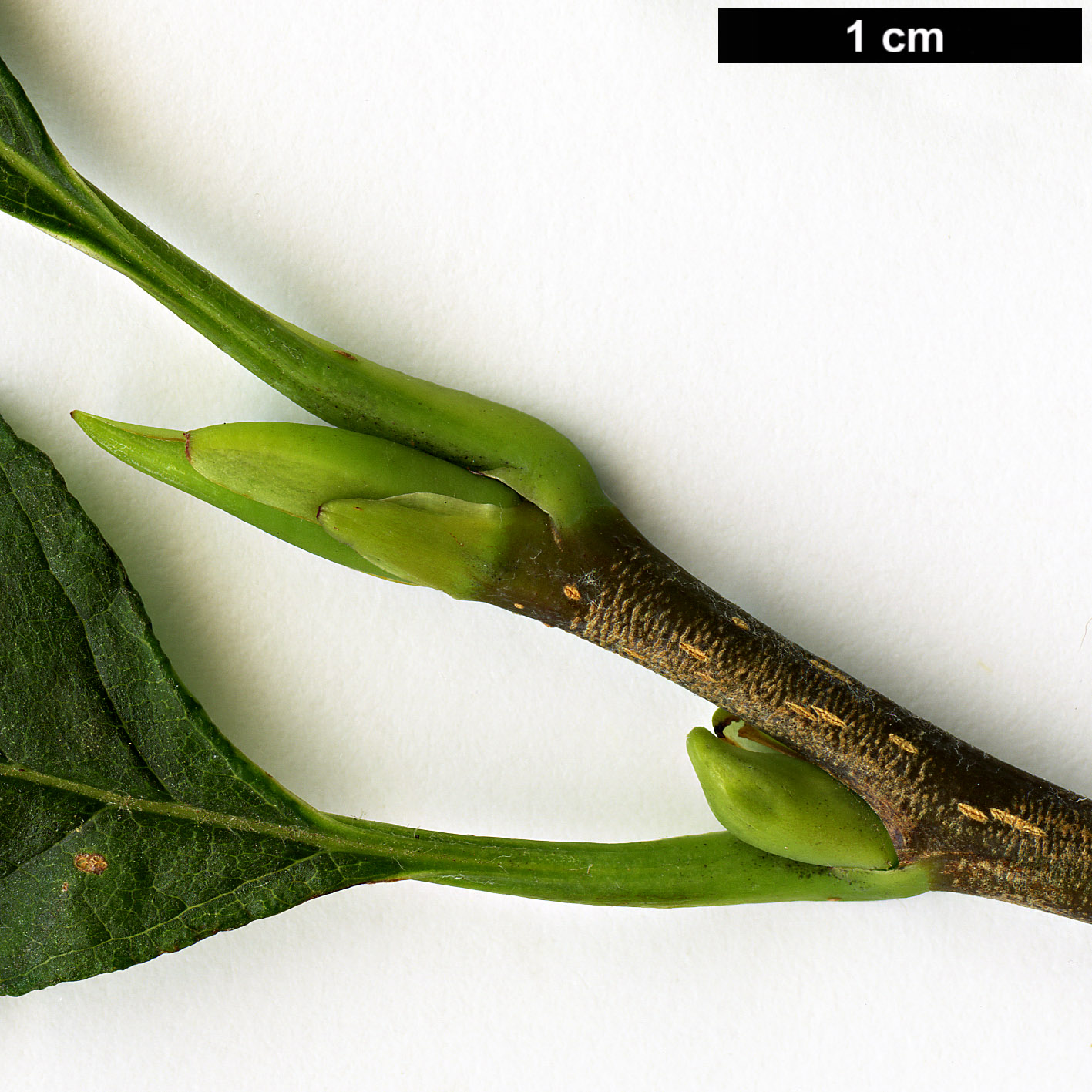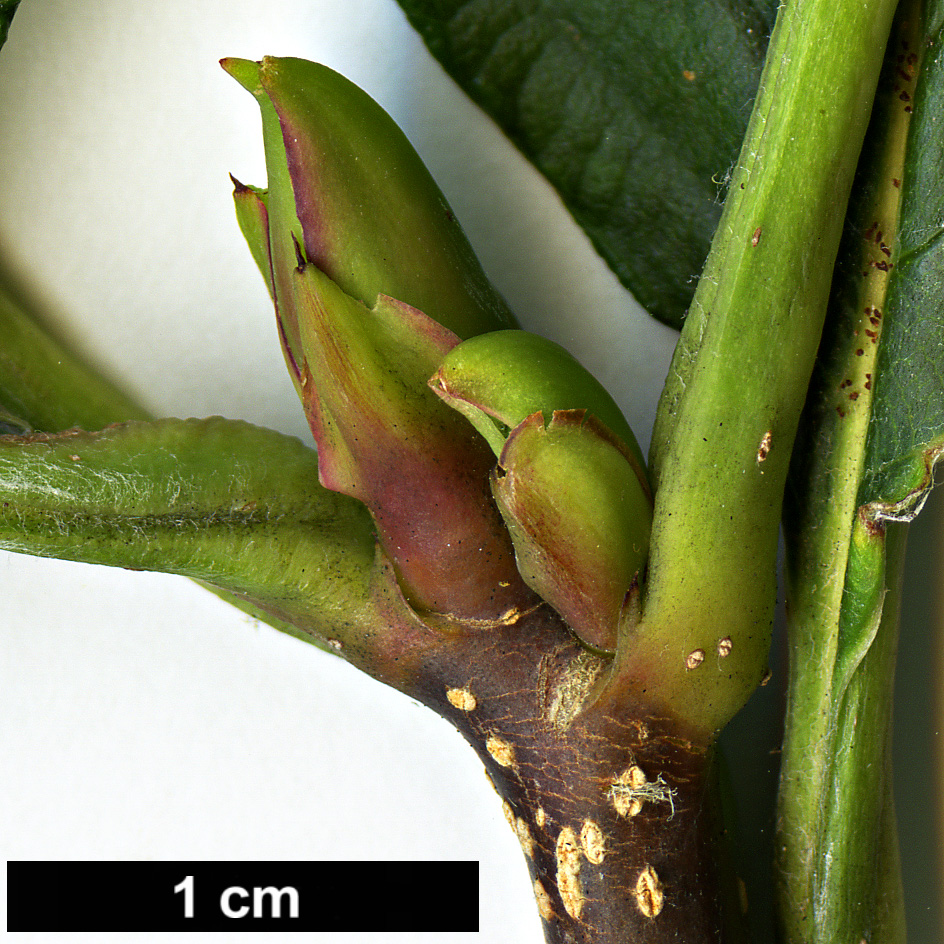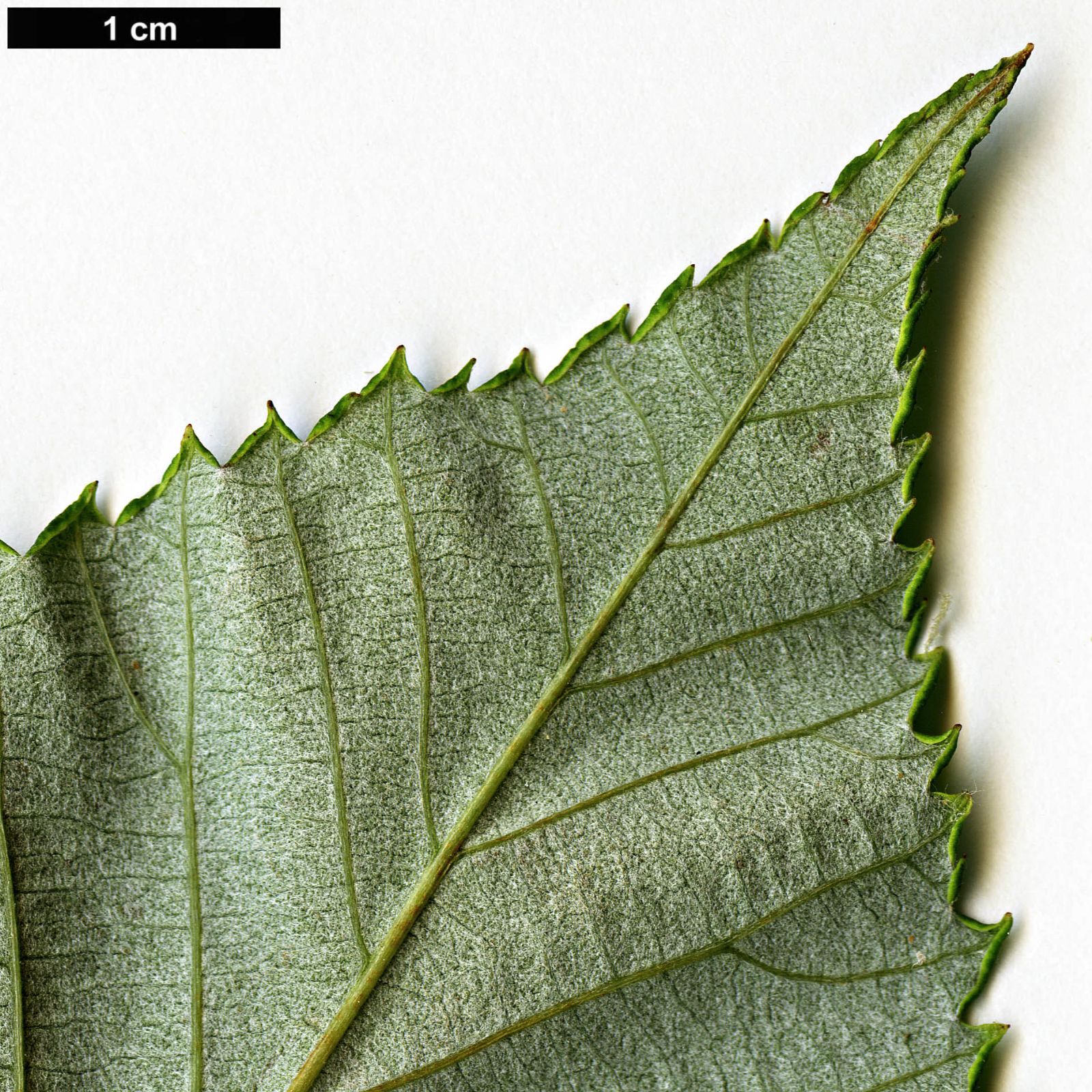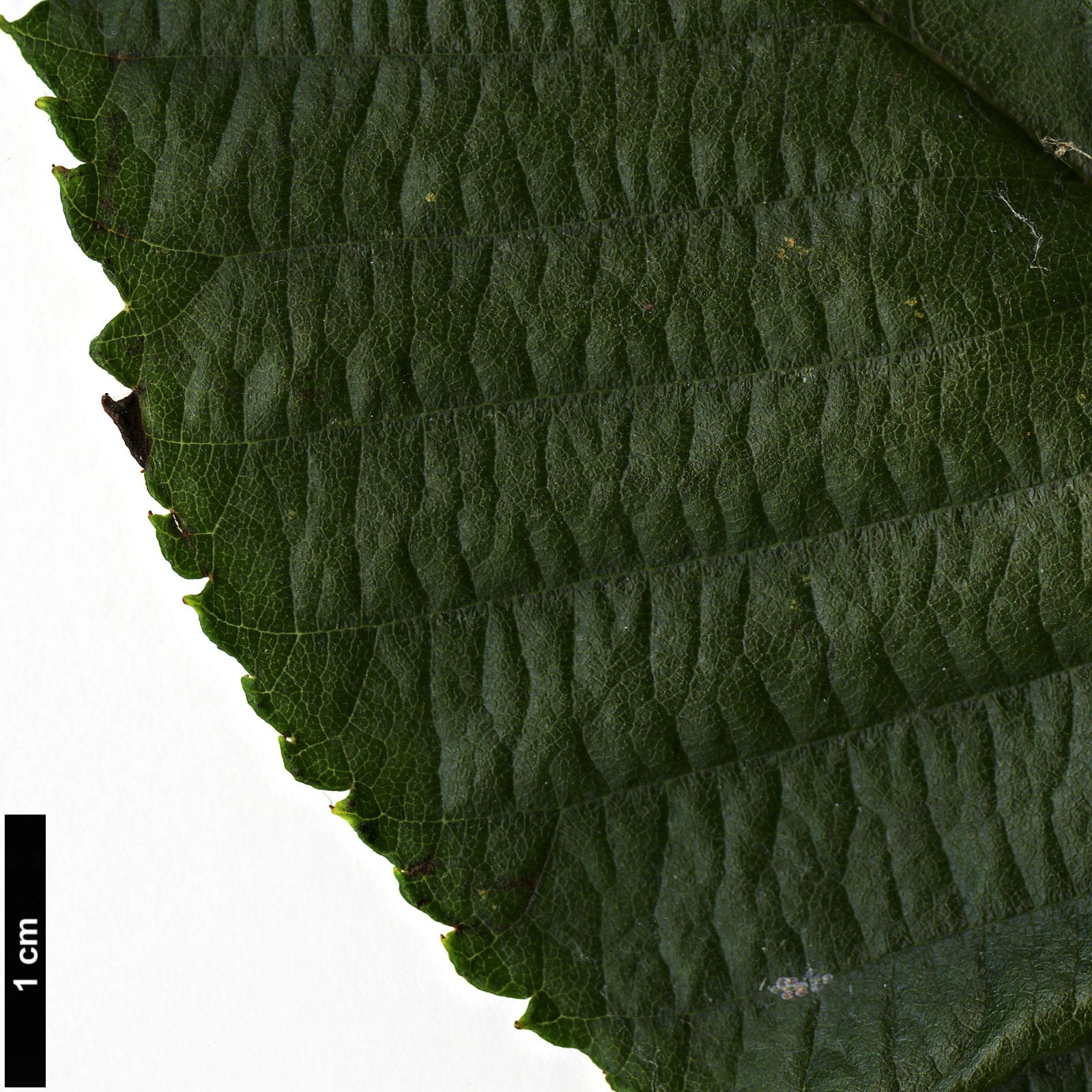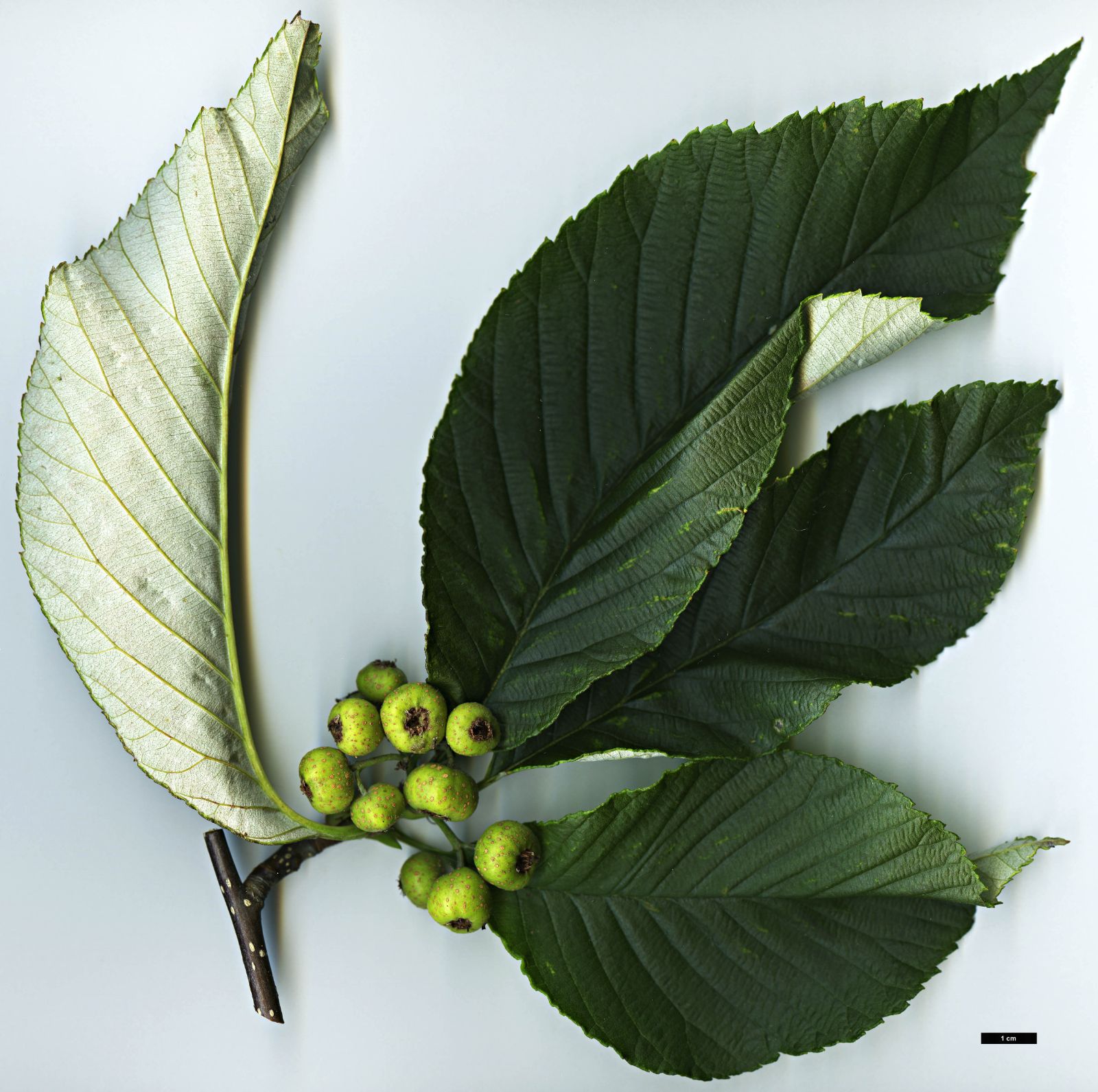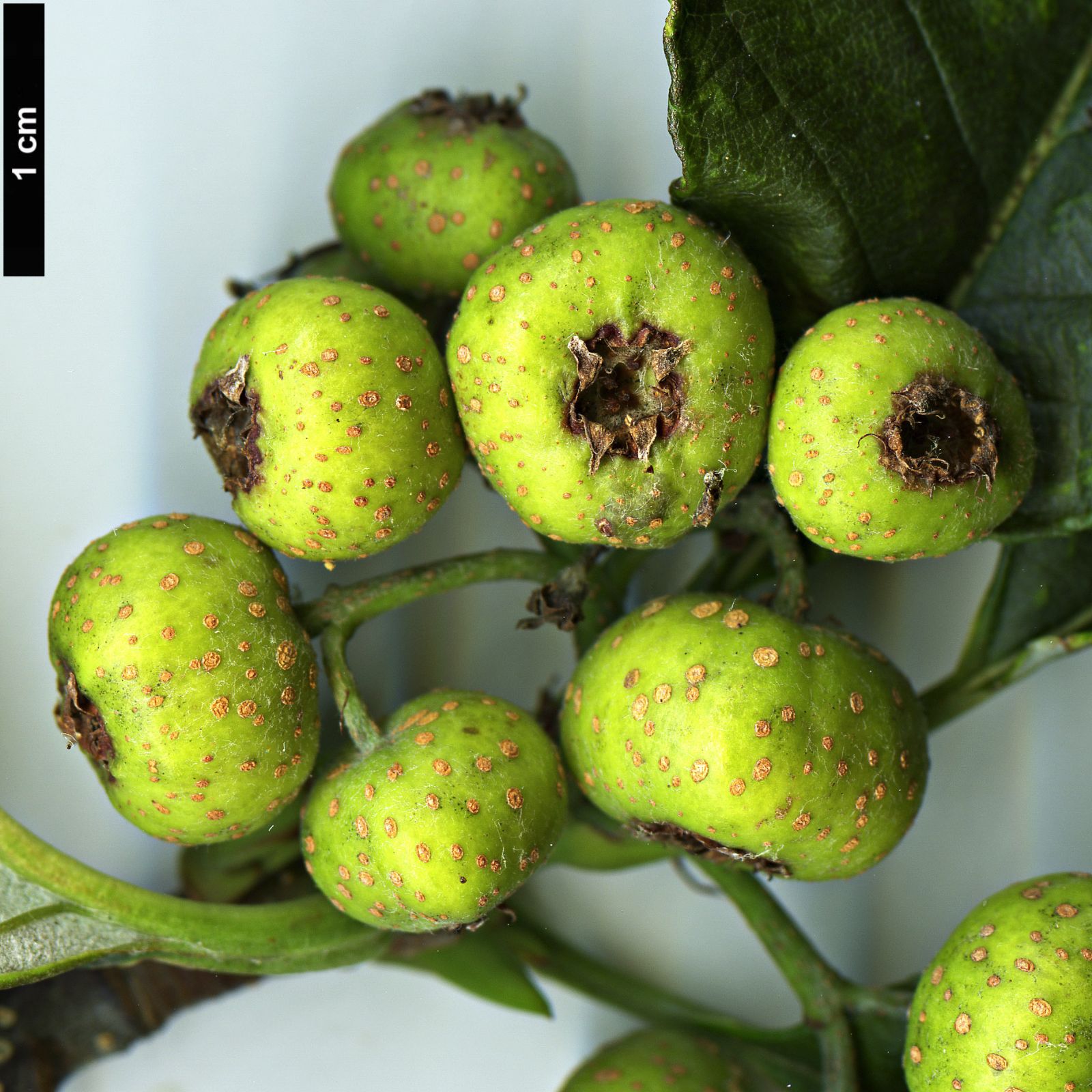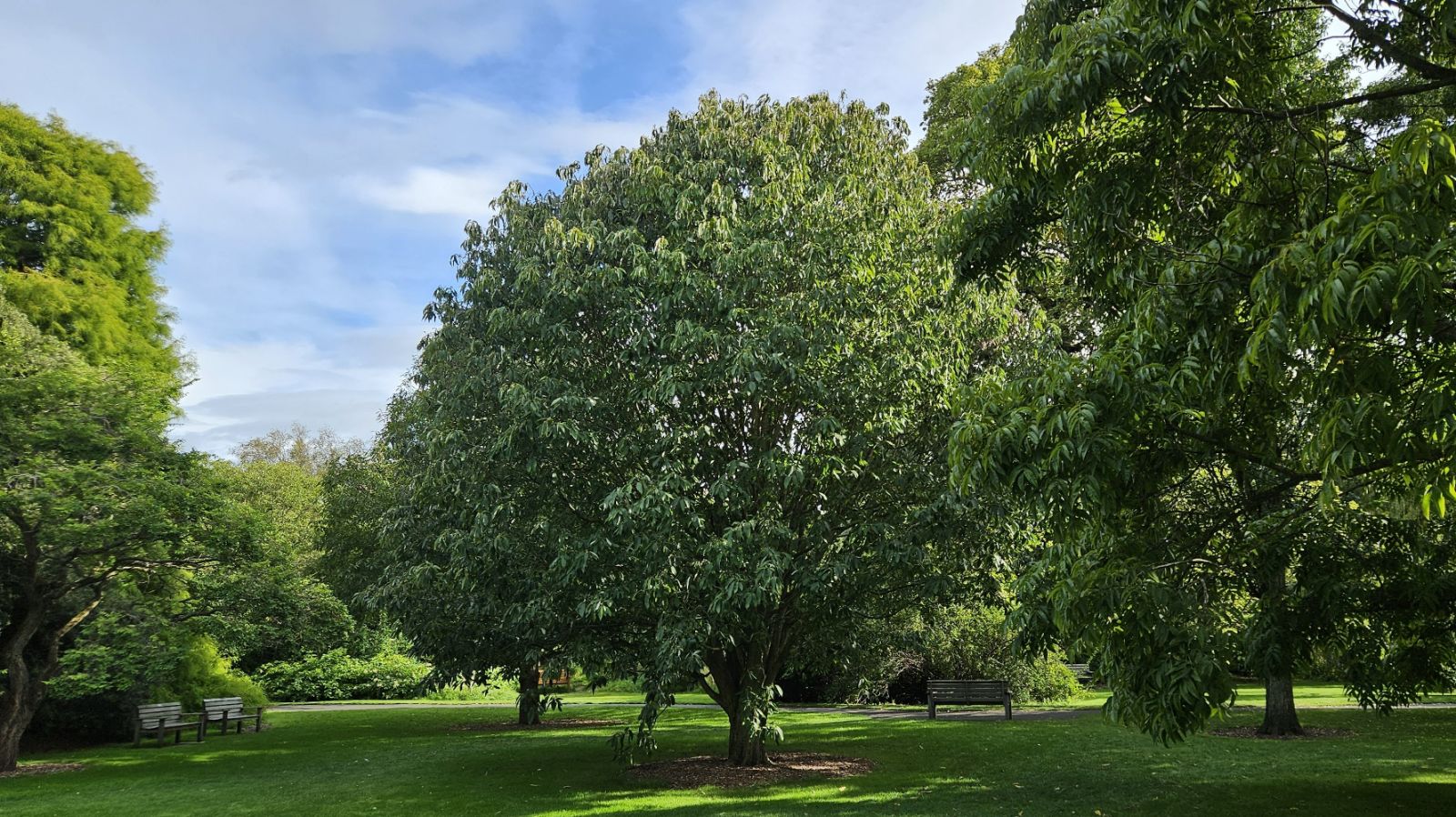Griffitharia hemsleyi
Credits
Article from New Trees by John Grimshaw & Ross Bayton
Recommended citation
'Griffitharia hemsleyi' from the website Trees and Shrubs Online (treesandshrubsonline.
Genus
Synonyms
- Aria hemsleyi (C.K. Schneid.) H. Ohashi & H. Iketani
- Aria xanthoneura (Rehder) H.Ohashi & Iketani
- Micromeles hemsleyi C.K. Schneid.
- Pyrus hemsleyi (C.K.Schneid.) Cardot
- Pyrus xanthoneura (Rehder) Cardot
- Sorbus hemsleyi (C.K. Schneid.) Rehder
- Sorbus xanthoneura Rehder
Editorial Note
The text below is from New Trees (Grimshaw & Bayton 2009) who discussed this taxon under the name Aria hemsleyi. We have created this hybrid article – New Trees text under the correct modern name, with appropriate synonymy – whilst we await sponsorship to enable a full revision of this genus to be written. We are re-organising the Sorbus sensu lato articles in this way to enable a new revision of Sorbus sensu stricto to commence in 2023, and to bring the nomenclature of this complex group of plants up to date in line with modern treatments.
TC, August 2023.
Shrub or tree 7–10 m or more. Branchlets dark reddish brown, smooth and glabrous with a few lenticels. Buds glabrous, 0.7–1 cm long. Leaves 9.5–13.5 × 5–7 cm, ovate to lanceolate, upper surface glabrous, lower surface sparsely hairy, 10–14 secondary veins on each side of the midrib, craspedodromous, margins double-serrate, apex short-acuminate; petiole 1.2–2 cm long, glabrous. Inflorescence paniculate, glabrous. Flowers white, hermaphrodite; hypanthium turbinate, sepals acute and persistent, petals glabrous, 0.4 cm long. Fruit green with reddish or yellowish tints, 0.7–0.9 × 0.7–1 cm, covered with lenticels. Flowering May to July, fruiting July to October (China). Gu et al. 2003, Aldasoro et al. 2004. Distribution CHINA: Anhui, Fujian, Gansu, Guangdong, Guangxi, Guizhou, Hubei, Hunan, Jiangxi, Shaanxi, Sichuan, Yunnan, Zhejiang; NEPAL. Habitat Evergreen broadleaved forest, between 900 and 3200 m asl. USDA Hardiness Zone 5–6. Conservation status Not evaluated. Illustration Spongberg 1991; NTxvi, NT821.
Aria hemsleyi is now well established in cultivation and proving itself to be an adaptable, easily grown and very attractive small tree – though it can become much larger in the wild (C. Crosbie, pers. comm. 2008). Its narrow leaves are greyish dark green above and nicely white below; they are held more or less upright on stiffly ascending branches, creating a pleasant shape overall. The leaves turn yellow in autumn. Its first introduction seems to have been from collections made in Hubei by the Sino-American Botanical Expedition in 1980 (SABE 1317, 1342), but it has been gathered on numerous later occasions as well, including, for example, the Kew expedition to Sichuan in 1994 (SICH 1464). (SICH 718, from 1991, had been identified as A. hemsleyi, but has now been determined to be A. pallescens.) Planted at Wakehurst Place, specimens from SICH 1464 are now up to 8 m tall or more (TROBI, measured in 2005). Most individuals in cultivation are probably descended from the SABE stock, however. Strangely, Spongberg (1991) considered A. hemsleyi to be ‘more of a botanical curiosity than a promising ornamental’, but this assessment now seems pessimistic, especially as it seems to grow well in western and northeastern North America. In the United Kingdom the name ‘John Bond’ has been attached to a clone selected in the early 1990s at Bridgemere Nurseries by Chris Sanders, out of a batch raised by David West from seed supplied to Roy Lancaster, from the original SABE trees at the Arnold Arboretum. This had a neater, more upright habit than others of the batch and was chosen to be planted at Wisley to commemorate John Bond’s service to the Woody Plant Trials Subcommittee, and was named in his honour on that occasion (R. Lancaster, C. Sanders, pers. comms. 2008). It is now in commercial production, perpetuating the memory of a great plantsman who was for many years the highly respected Keeper of the Gardens in Windsor Great Park.
Plants distributed from Heronswood Nursery (c.2001) as S. henryi Rehder under Eric Hammond’s number EDHCH 97163, gathered in Sichuan, may be A. hemsleyi, within which S. henryi is included by Flora of China – although Stephen Spongberg records a dissenting view and maintains its distinction. Material shown at the Sorbus Workshop at Wisley in September 2008, however, was judged to resemble A. pallescens. Sorbus xanthoneura Rehder is another name lumped under A. hemsleyi in Flora of China, which is not very reliable on Sorbus (H. McAllister, pers. comm. 2008), and specimens may be found under this name (for example, KR 161 from Emei Shan, which does not match the usual view of A. hemsleyi) (K. Rushforth, pers. comm. 2008).

